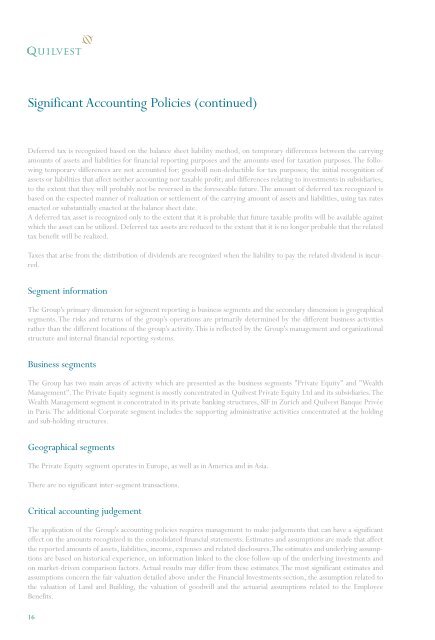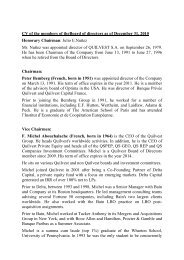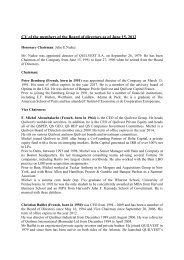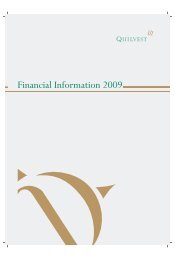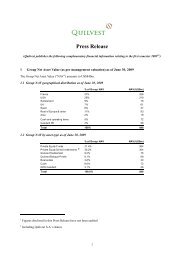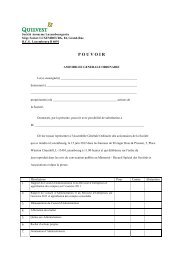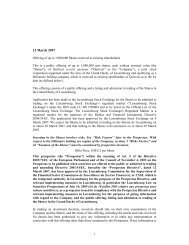Annual Report 2006 – Financial Section - Quilvest
Annual Report 2006 – Financial Section - Quilvest
Annual Report 2006 – Financial Section - Quilvest
You also want an ePaper? Increase the reach of your titles
YUMPU automatically turns print PDFs into web optimized ePapers that Google loves.
Significant Accounting Policies (continued)<br />
Deferred tax is recognized based on the balance sheet liability method, on temporary differences between the carrying<br />
amounts of assets and liabilities for financial reporting purposes and the amounts used for taxation purposes.The following<br />
temporary differences are not accounted for: goodwill non-deductible for tax purposes; the initial recognition of<br />
assets or liabilities that affect neither accounting nor taxable profit; and differences relating to investments in subsidiaries,<br />
to the extent that they will probably not be reversed in the foreseeable future.The amount of deferred tax recognized is<br />
based on the expected manner of realization or settlement of the carrying amount of assets and liabilities, using tax rates<br />
enacted or substantially enacted at the balance sheet date.<br />
A deferred tax asset is recognized only to the extent that it is probable that future taxable profits will be available against<br />
which the asset can be utilized. Deferred tax assets are reduced to the extent that it is no longer probable that the related<br />
tax benefit will be realized.<br />
Taxes that arise from the distribution of dividends are recognized when the liability to pay the related dividend is incurred.<br />
Segment information<br />
The Group's primary dimension for segment reporting is business segments and the secondary dimension is geographical<br />
segments. The risks and returns of the group's operations are primarily determined by the different business activities<br />
rather than the different locations of the group's activity.This is reflected by the Group's management and organizational<br />
structure and internal financial reporting systems.<br />
Business segments<br />
The Group has two main areas of activity which are presented as the business segments "Private Equity" and "Wealth<br />
Management".The Private Equity segment is mostly concentrated in <strong>Quilvest</strong> Private Equity Ltd and its subsidiaries.The<br />
Wealth Management segment is concentrated in its private banking structures, SIF in Zurich and <strong>Quilvest</strong> Banque Privée<br />
in Paris.The additional Corporate segment includes the supporting administrative activities concentrated at the holding<br />
and sub-holding structures.<br />
Geographical segments<br />
The Private Equity segment operates in Europe, as well as in America and in Asia.<br />
There are no significant inter-segment transactions.<br />
Critical accounting judgement<br />
The application of the Group's accounting policies requires management to make judgements that can have a significant<br />
effect on the amounts recognized in the consolidated financial statements. Estimates and assumptions are made that affect<br />
the reported amounts of assets, liabilities, income, expenses and related disclosures.The estimates and underlying assumptions<br />
are based on historical experience, on information linked to the close follow-up of the underlying investments and<br />
on market-driven comparison factors. Actual results may differ from these estimates.The most significant estimates and<br />
assumptions concern the fair valuation detailed above under the <strong>Financial</strong> Investments section, the assumption related to<br />
the valuation of Land and Building, the valuation of goodwill and the actuarial assumptions related to the Employee<br />
Benefits.<br />
16


